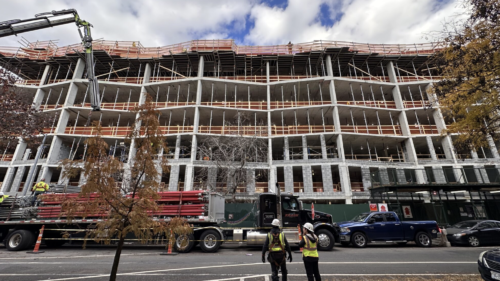Rescue Capital: Staying Afloat Amid Uncertainty in the Real Estate Market
March, 17 2023Written by Joe Berko, CEO & Founder Astor Realty Capital
Published Mar 06, 2023, Wealthmanagement.com
As we move into 2023, market uncertainty and economic jitters are fueling a wave of distressed real estate transactions. While familiar debt-workout scenarios such as bankruptcies and foreclosures will be in play, the next few years could also see an uptick in what’s called ‘rescue capital’ deals – reminiscent of an investment trend made famous during the 1980s era stagflation.
Many investment ventures are seeking alternative sources of capital to keep their projects afloat. Fortunately, Prequin estimates, that private equity firms, family offices and real estate funds have about $240 billion in “dry powder” reserves that can help bridge the gap caused by limited refinance options and unfavorable valuations for disposition.

The real estate market is witnessing a surge in interest from seasoned investors and those looking to take advantage of the many opportunities presented by rescue capital transactions. These hybrid investments, which illustrate an effective combination between equity and debt, can offer great potential for both existing owners seeking assistance as well as reinvestment sources targeting this specialized field.
Rescue capital can provide a solution to the equity gap by allowing investors to infuse additional capital into existing investments. This additional capital can help real estate owners and investors bridge the gap between their current assets and liabilities, allowing them to access better financing terms or even reduce overall debt service costs. Rescue capital can also enable investors to acquire new properties or reposition existing properties to unlock new value. By injecting additional capital into existing investments, rescue capital can help investors maximize returns while minimizing risk and providing a much-needed liquidity buffer in challenging times. In today’s market, rescue capital has become an important tool for real estate owners and investors looking to take advantage of current market conditions. With the right partner, it can help drive value and provide the financial flexibility needed to weather the turbulent market environment.
With current economic conditions affecting commercial real estate projects, Astor has seen an increase of demand to provide rescue capital. The main reason being time. As projects take longer to complete, reserves intended for carrying costs such as interest, property tax, insurance and other fees may have depleted prior to the completion of the development leading to a need for a fresh injection of funds. Rescue capital for commercial real estate has seen a considerable surge in demand due to higher interest rates. Many loans taken out during construction phases have adjustable rates, leaving many projects off balance should the rate increase sharply. Rescue capital is then required to bridge the gap and help protect tenant occupancy levels as well as momentum within the project. The need for rescue capital is likely to further increase if interest rates remain high or continue to rise, compelling more owners and lenders to seek out such financiers who can provide short-term solutions in a timely manner. Increase of cost of goods and labor due to inflation has been a significant contributing factor to cost overruns in the US. Rescue capital for commercial real estate is being drastically affected, with an increase in both costs leading to shortages in supply and rising prices. These unexpected expenses are largely responsible for the 90% of projects that have reported cost overruns.
Recapitalization of Waterfall and Capital Stack
A substantial restructuring of the existing capital stack is often required when a rescue capital infusion takes place. This allows for debt-like features within preferred equity, and may result in new terms among all investors – both those who were previously involved as well as any additional participants. Dilution to voting rights or economic interests are possible consequences from such recapitalizations that should be weighed before entering into a transaction involving these funds.
In extreme scenarios, current investors could find themselves pushed to the back of the line as “hope note” stakeholders. Preference rights that call for foreclosure-like measures may also be put in place. Achieving a successful outcome will require skillful negotiations concerning possible implementation of “put” and “call” arrangements or deadlock provisions. To further aid companies in need, rescue capital can inject funds not with preferred equity but by means of debt providing cash flows along with beneficial tax outcomes specifically tailored towards foreign investments – much like Reagan’s economic policies favored conversion features decades ago!
Reducing Distressed Sales
Rescue capital does have a history of stepping in and providing an alternative to throwing keys back to a lender. It’s a more efficient and cost-effective way to recapitalize an asset as opposed to having it run through a process where there is a foreclosure or bankruptcy and new equity comes in. Rescue capital is an effective post-default financing solution, providing a viable alternative to foreclosure. With the right circumstances and timely implementation of rescue funds, distressed situations can often be remedied without any further action being necessary – potentially saving time and money in comparison with more traditional processes that include foreclosures or bankruptcy proceedings. That said, while it may make a dent in overall levels of distress across markets, as long as conditions remain challenging there will inevitably still be extreme cases where additional resources are needed beyond what has been offered by rescue partners.
Overall, the current market conditions have had a major impact on investments and disrupted various capital sources. However, rescue capital has emerged as one of the most effective tools for real estate owners and investors who are seeking to take advantage of current market opportunities. Through the partnership of institutions like private equity firms and family offices with substantial reserves and qualified sponsors, rescue capital can bridge the gap caused by limited refinance options and unfavorable valuations.
Rescue capital provided by Astor ensures that these projects can stay on track and be completed with the quality achieved in their design and allows developers, and other stakeholders involved in real estate development the critical support needed to push through the arduous process of putting together a successful project. Astor is a trusted provider of such capital and has to date invested Preferred Equity in numerous projects valued at $937M at stabilization. Astor can provide sound advice on how to navigate these complex issues. Contact us today to learn more about how Astor can provide innovative and comprehensive funding strategies. www.astorrealtycapital.com
Joe Berko is the CEO & Founder of Astor Realty Capital. Astor Realty Capital is an institutionally backed private equity firm led by a seasoned team with solid commitment to the growth and preservation of our investors capital.
Astor’s diversified real estate portfolio spans over 3.6 million square feet, valued over $2.27 billion in 12 major markets (US) achieving exceptional risk- adjusted returns that surpass industry standards.






